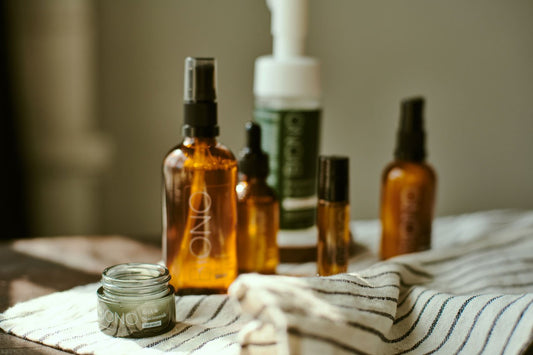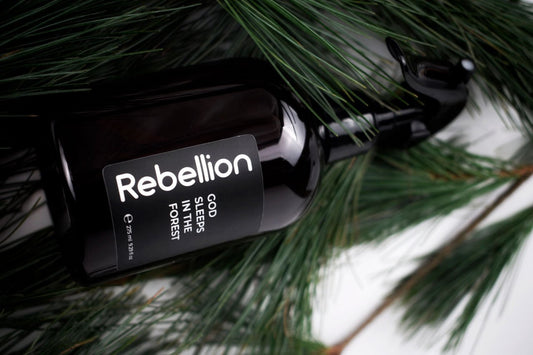
Comedogenic oils: what are they and how do they affect your skin?
What is Comedogenicity?
Comedogenicity is the ability of certain ingredients to clog pores. When the pores become clogged, blackheads, whiteheads and other types of rashes can appear on the skin. Oils that are highly comedogenic tend to cause these problems, especially in people with oily or combination skin.Why Is This Important?
Choosing the wrong cosmetic products can lead to deterioration of the skin condition. If you're acne-prone or have sensitive skin, using comedogenic oils can make things worse. Therefore, it is important to know which oils are suitable for your skin and which ones should be avoided.Comedogenic ingredients create a barrier on the surface of the skin that prevents pores from breathing freely and toxins from being removed. This can lead to the accumulation of sebum and dead cells, creating ideal conditions for the development of bacteria and inflammation. By choosing non-comedogenic products, you reduce the risk of breakouts and improve the overall condition of the skin. Therefore, it is important to carefully study the composition of cosmetic products and avoid those that contain ingredients with high comedogenicity.
Comedogenic Oils and Their Effects on Skin Health: Revealing the Secrets of Care
The effect of comedogenic oils on the skin
Pores are a key element of skin health. When they get clogged, it can lead to acne, blackheads, and other problems. Comedogenic oils, which have a high capacity to clog pores, can be the main cause of these troubles. They can create a barrier on the skin that prevents proper breathing and elimination of toxins.Comedogenic oils are often found in cosmetic products, and their use can have a negative effect on the skin, especially for those with acne-prone or oily skin. These oils contribute to the accumulation of sebum and dead skin cells in the pores, which creates a favorable environment for the reproduction of bacteria and inflammation. As a result, the skin can become irritated, redness and rashes appear.
It is important to carefully read the ingredients of cosmetic products and avoid products containing comedogenic ingredients if you have problem skin. Instead, it is better to choose non-comedogenic products that do not clog pores and allow the skin to breathe. Look for ingredients that have a light texture and absorb well, providing the skin with the care it needs without the risk of inflammation.
Popular Comedogenic Oils
Some of the most comedogenic oils include:- Coconut oil: Popular in hair care, but can clog pores on the face.
- Cocoa butter: Often used in moisturizers, but not suitable for oily skin.
- Olive Oil: Good for the body, but can be too heavy for the face.
How to choose safe alternatives
However, not all oils are harmful to pores. There are plenty of safe, low-comed alternatives to help you maintain healthy skin. For example, jojoba oil, which has a texture similar to the skin's natural oils, is a great option for people with oily or combination skin. Also, safe alternatives include hemp oil and sunflower oil, which perfectly moisturize the skin without leaving an oily sheen or clogging pores.List of safe oils for the skin:
- Jojoba oil
- Hemp oil
- Sunflower oil
How to reduce comedogenic oils in your skin care routine
One of the effective ways to reduce the comedogenicity of oils is to dilute them with other ingredients. For example, mixing coconut or olive oil with non-comedogenic oils like jojoba or hemp oil can significantly reduce their pore-clogging ability. You can also use these oils in smaller amounts or choose products where they are only one of the components rather than the main ingredient.It is also important to pay attention to the application methods. For example, applying oil to still damp skin after cleansing helps the oil absorb better and reduces the risk of clogging pores. Regular exfoliation will help remove dead skin cells and prevent the accumulation of sebum, which also reduces the comedogenic effect of oils.
Consideration of skin type when choosing oils
Your skin type is a key factor when choosing your skin care oils. If you have dry skin, less comedogenic oils like avocado oil or sweet almond oil can provide the moisture you need without the risk of breakouts. For combination or oily skin, you should prefer light, fast-absorbing oils, such as grape seed oil or sunflower oil.Also, consider possible individual reactions to certain oils. Even if an oil is generally non-comedogenic, it may not be right for your skin. It is recommended to start with small amounts and gradually increase the use, observing the reaction of the skin. This will help to find the optimal balance and ensure effective and safe care.
The effect of seasonal changes on the use of skin oils
Seasonal changes can greatly affect the condition of your skin and its needs. In winter, the skin is prone to dryness due to low humidity and cold wind, so you should choose more moisturizing oils, such as avocado oil or shea butter. These oils have a rich composition and are able to provide the necessary protection and hydration, creating a barrier that prevents moisture loss.During the warm season, when the skin can become more oily due to increased sweating, lighter oils such as grape seed oil or jojoba oil should be preferred. They are quickly absorbed without leaving an oily sheen and help maintain moisture balance without clogging pores. This is especially important to prevent breakouts on hot days.
Combining oils with other cosmetic products
To achieve the best results, you should use oils in combination with other cosmetic products. For example, you can add a few drops of oil to your moisturizer to increase its nourishing effect without the risk of overloading the skin. This approach allows you to maintain a balance between hydration and breathing of the skin, especially for those who are prone to acne.It's also important to integrate oils into your routine with other skin care steps, such as cleansing and toning. The use of gentle, non-comedogenic cleansers will help prepare the skin for oil application, ensuring its cleanliness and ability to better absorb beneficial substances. Such a comprehensive approach will help you achieve healthy and radiant skin, minimizing the risk of problems.










